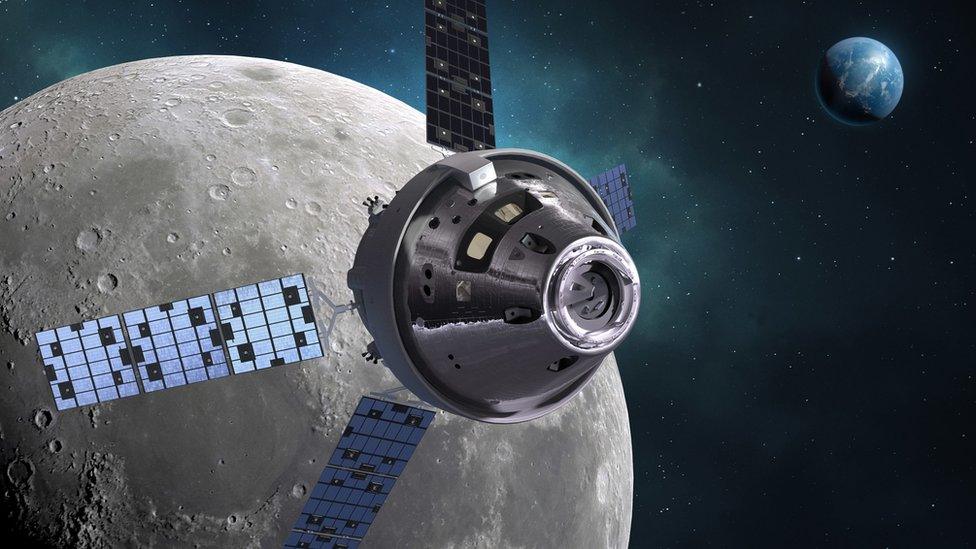Blue Origin: Amazon's Jeff Bezos rocket one step closer to Moon mission
- Published
- comments
A self landing-rocket designed by Blue Origin, a company owned by Amazon founder Jeff Bezos has had a successful test flight in Texas, US.
The rocket is the latest step towards a return to the moon for Nasa and another giant leap for the billionaire-owned space companies competing to make the journey.
Just like SpaceX, owned by Elon Musk, Blue Origin is developing technology that could land humans on the lunar surface by 2024.
Nasa will eventually choose just one company to make that journey; taking the first woman and the next man to the Moon.
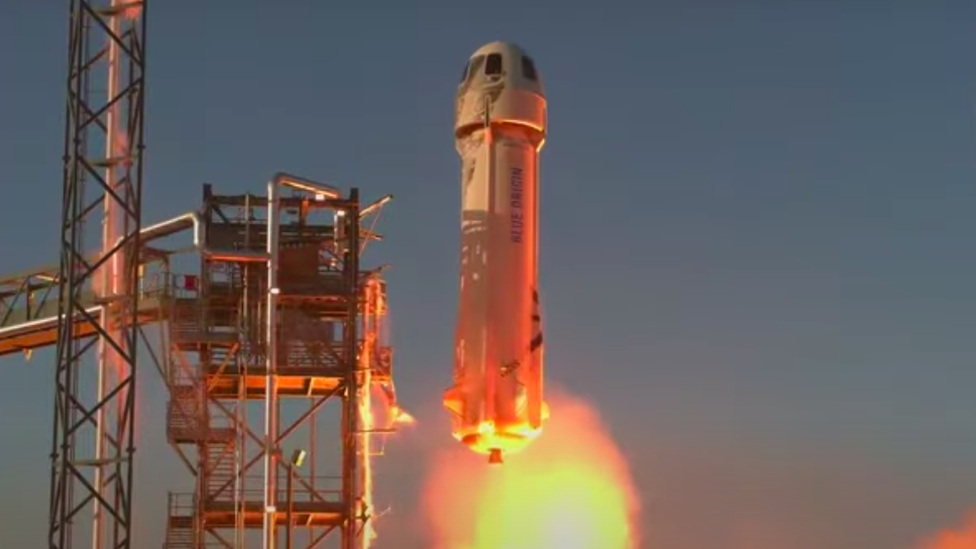
Tuesday's launch took place from Blue Origin's test facility in West Texas
Blue Origin's rocket, called New Shepard was carrying sensors, a computer and software designed to help space vehicles land on moons and planets.
That technology is really important for the safety of future missions. Called Splice, it stands for Safe and Precise Landing - Integrated Capabilities Evolution. Catchy!
Sensors use cameras to gather information about the surroundings, which is then merged with pre-loaded maps to determine the vehicle's exact location.
During the first Moon landing in 1969, Nasa only had low-resolution maps of the Moon, meaning Neil Armstrong and Buzz Aldrin almost came down in a rock field during the Apollo 11 mission.
Stefan Bieniawski, senior engineer at Blue Origin said successfully landing the rocket was really important because it was close "to what we want to do with the lunar landing."
And, Nasa wants to see how the rocket performs here on Earth before it's sent to the Moon.
Mission delayed
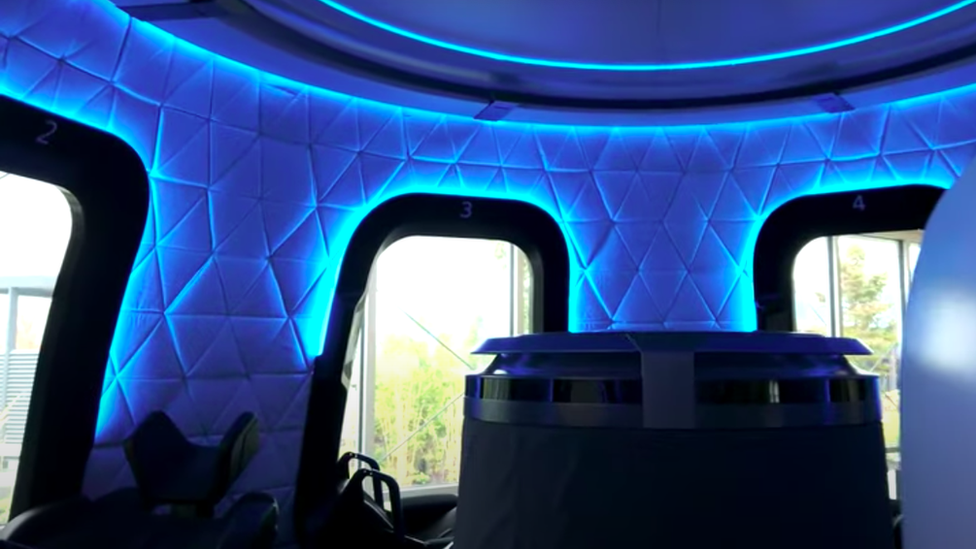
Inside the crew capsule: It features the largest windows ever flown in space
The mission was originally set for the end of September, but had been delayed several times because of bad weather and technical issues.
However it successfully launched just after 630am Texas time on Tuesday morning and came back in two pieces - which is meant to happen - ten minutes later.
The rocket booster landed back to Earth, as the capsule which had separated from the launcher floated back to the surface with the help of parachutes.
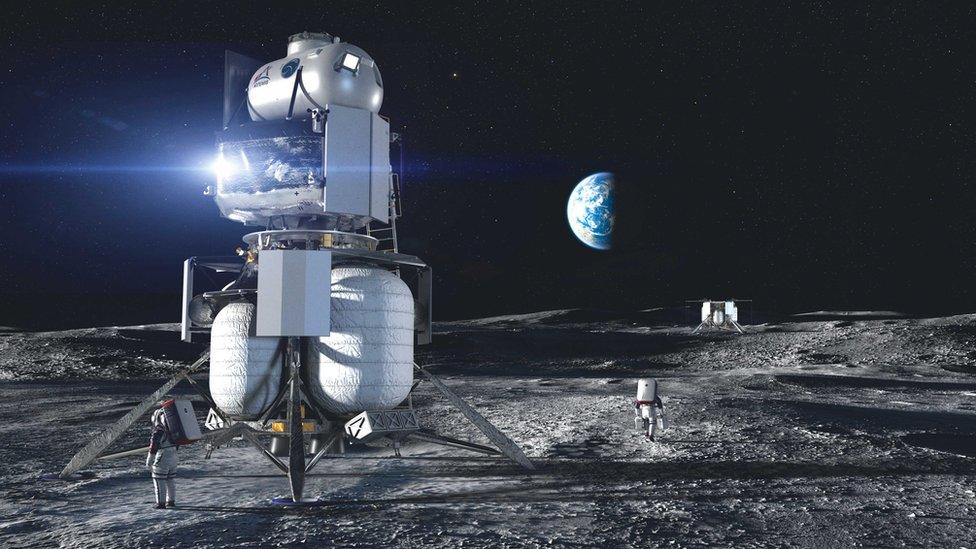
Blue Origin is leading a team that has won a contract from Nasa to start developing a lunar lander
The craft has now been sent to the edge of space seven times during test flights and will also be used to take tourists to the edge of Earth's atmosphere in the future.
Blue Origin's space tourism will allow travellers to experience low gravity while enjoying a view of the planet from inside a capsule that has the 'biggest windows ever sent to space'.
Over the next few years Nasa's Artemis programme will see humans return to the lunar surface to work at the Moon's South Pole.
Plans include building a space station and a mining facility.
- Published1 June 2020
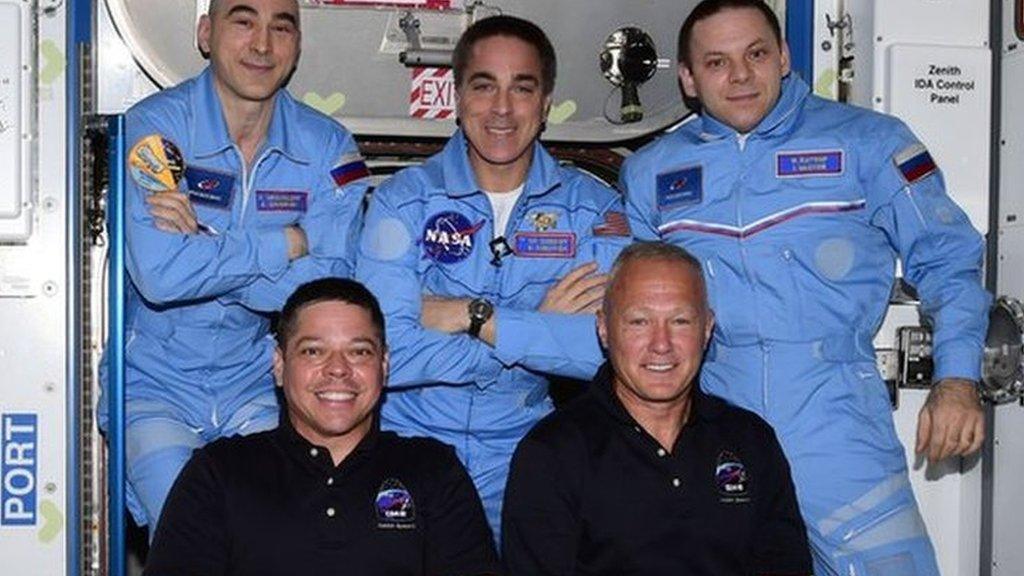
- Published1 October 2020
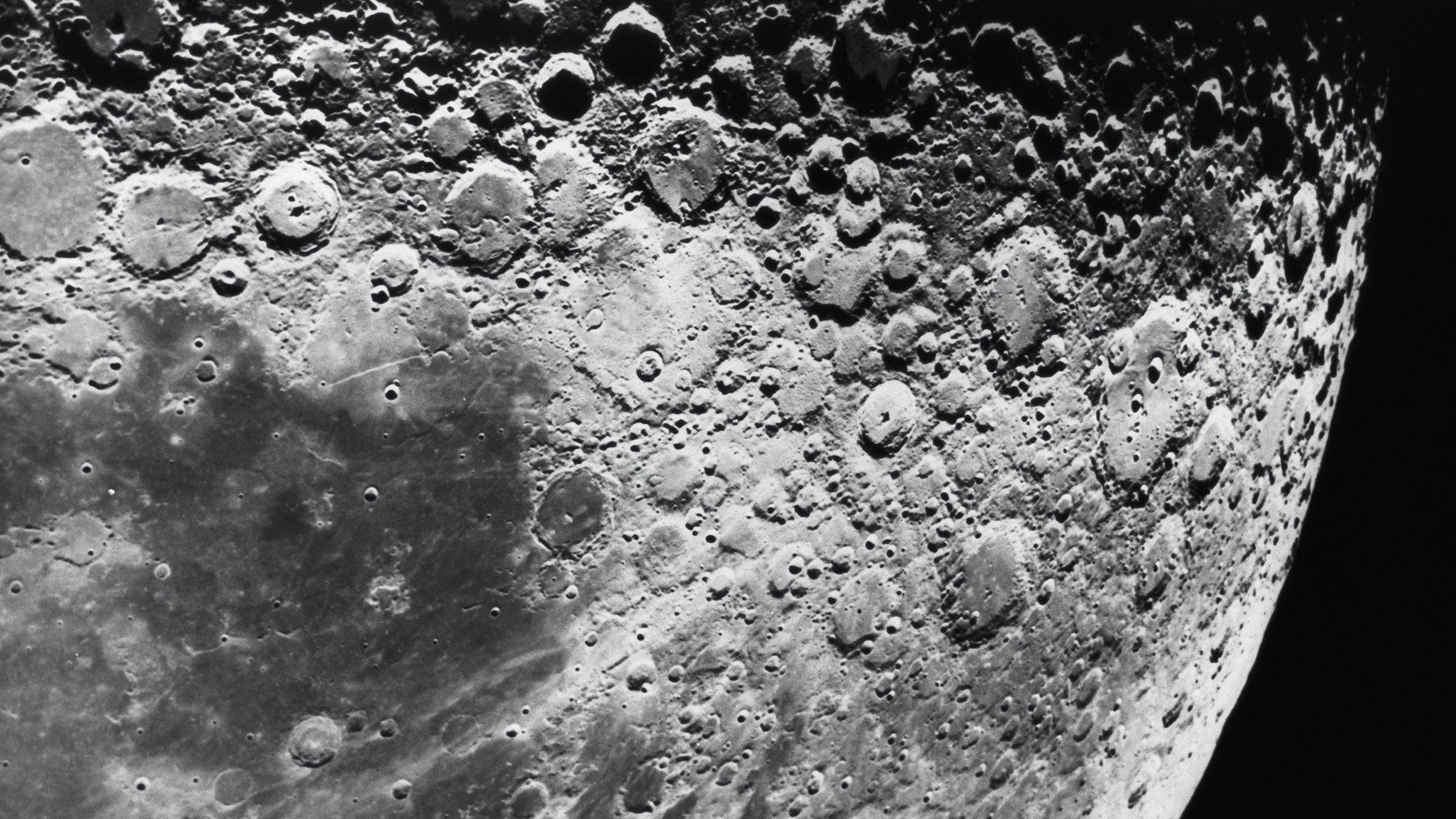
- Published23 September 2020
